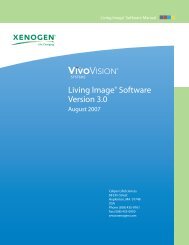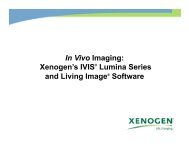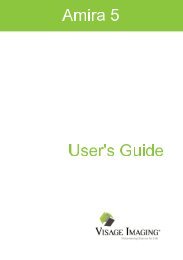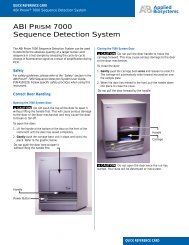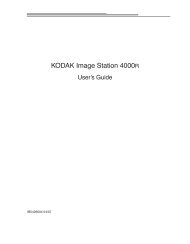ABI PRISM 7000 Sequence Detection Systems Relative ...
ABI PRISM 7000 Sequence Detection Systems Relative ...
ABI PRISM 7000 Sequence Detection Systems Relative ...
You also want an ePaper? Increase the reach of your titles
YUMPU automatically turns print PDFs into web optimized ePapers that Google loves.
Safety and EMC Compliance Information<br />
Chemical Waste Safety<br />
• Minimize the inhalation of chemicals. Do not leave chemical containers open. Use<br />
only with adequate ventilation (for example, fume hood). For additional safety<br />
guidelines, consult the MSDS.<br />
• Check regularly for chemical leaks or spills. If a leak or spill occurs, follow the<br />
manufacturer’s cleanup procedures as recommended on the MSDS.<br />
• Comply with all local, state/provincial, or national laws and regulations related to<br />
chemical storage, handling, and disposal.<br />
Chemical Waste Safety<br />
Chemical Waste<br />
Hazard<br />
HAZARDOUS WASTE. Refer to Material Safety Data Sheets and<br />
local regulations for handling and disposal.<br />
CHEMICAL WASTE HAZARD. Wastes produced by Applied<br />
Biosystems instruments are potentially hazardous and can cause injury, illness, or death.<br />
CHEMICAL STORAGE HAZARD. Never collect or store waste<br />
in a glass container because of the risk of breaking or shattering. Reagent and waste<br />
bottles can crack and leak. Each waste bottle should be secured in a low-density<br />
polyethylene safety container with the cover fastened and the handles locked in the<br />
upright position. Wear appropriate eyewear, clothing, and gloves when handling reagent<br />
and waste bottles.<br />
Chemical Waste<br />
Safety Guidelines<br />
To minimize the hazards of chemical waste:<br />
• Read and understand the Material Safety Data Sheets (MSDSs) provided by the<br />
manufacturers of the chemicals in the waste container before you store, handle, or<br />
dispose of chemical waste.<br />
• Provide primary and secondary waste containers. (A primary waste container holds<br />
the immediate waste. A secondary container contains spills or leaks from the<br />
primary container. Both containers must be compatible with the waste material and<br />
meet federal, state, and local requirements for container storage.)<br />
• Minimize contact with chemicals. Wear appropriate personal protective equipment<br />
when handling chemicals (for example, safety glasses, gloves, or protective<br />
clothing). For additional safety guidelines, consult the MSDS.<br />
• Minimize the inhalation of chemicals. Do not leave chemical containers open. Use<br />
only with adequate ventilation (for example, fume hood).For additional safety<br />
guidelines, consult the MSDS.<br />
• Handle chemical wastes in a fume hood.<br />
• After emptying the waste container, seal it with the cap provided.<br />
• Dispose of the contents of the waste tray and waste bottle in accordance with good<br />
laboratory practices and local, state/provincial, or national environmental and<br />
health regulations.<br />
DRAFT<br />
September 26, 2003 3:14 pm, RQGSG_Safety.fm<br />
xiv <strong>Relative</strong> Quantification Getting Started Guide for <strong>7000</strong> v1.1




